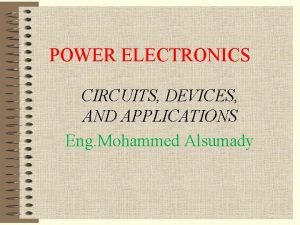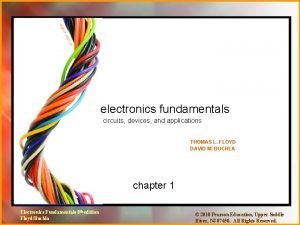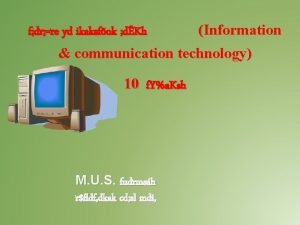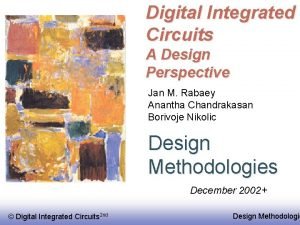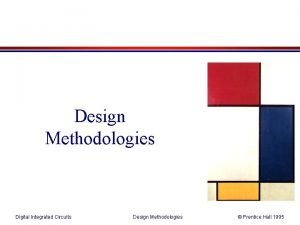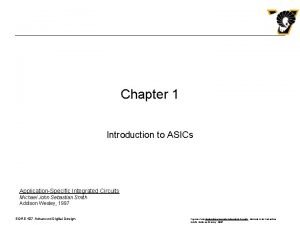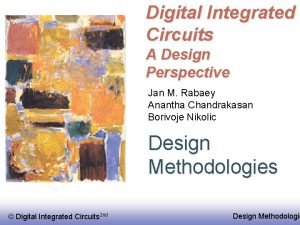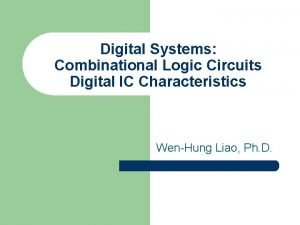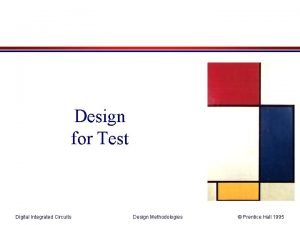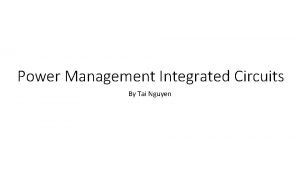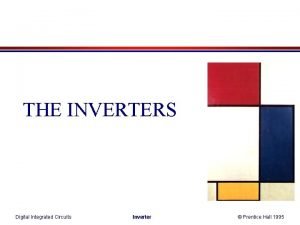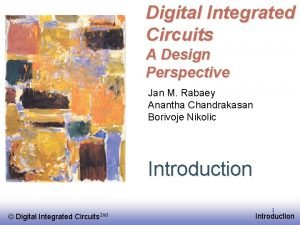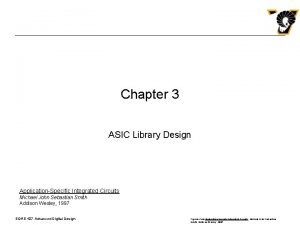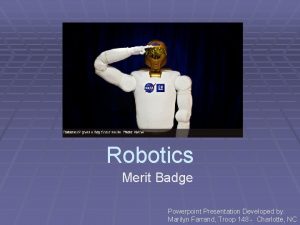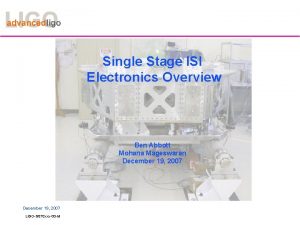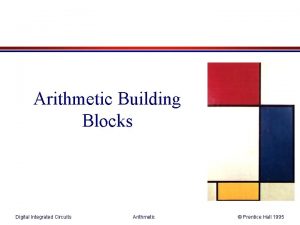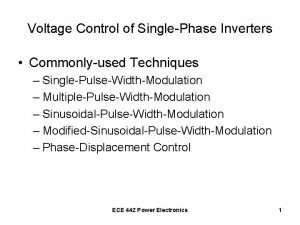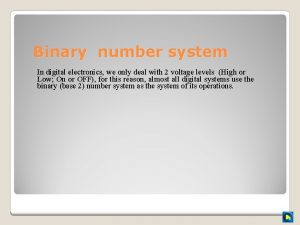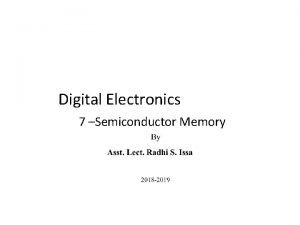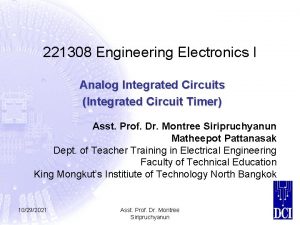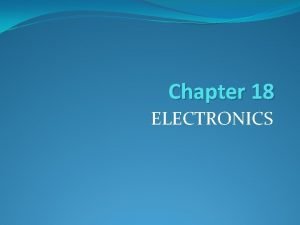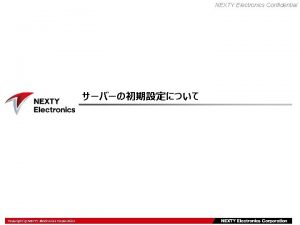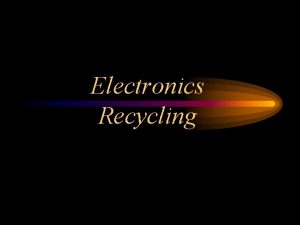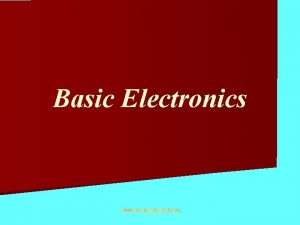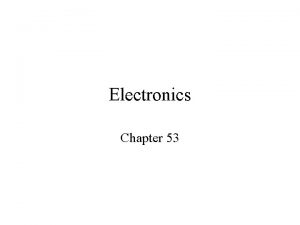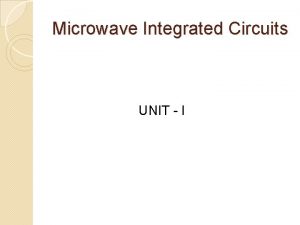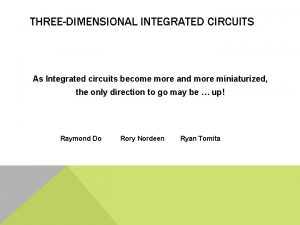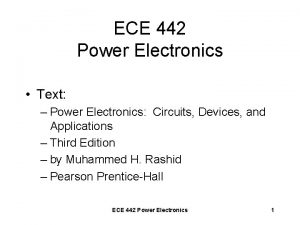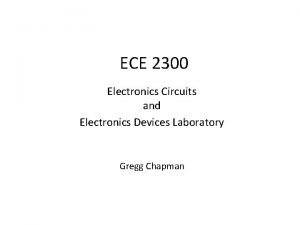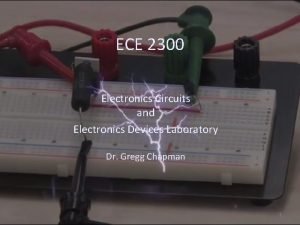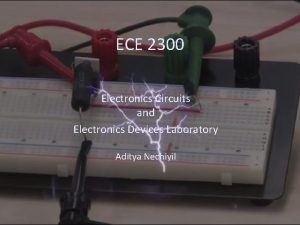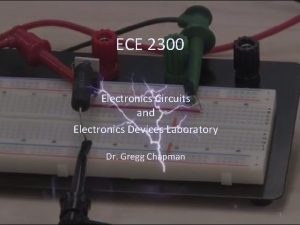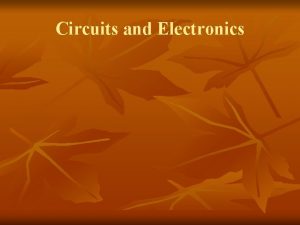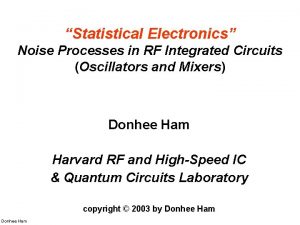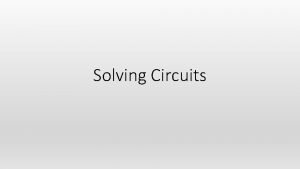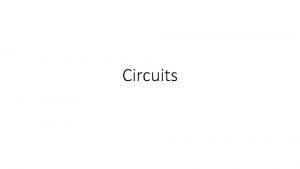INTEGRATED CIRCUITS 1 INTEGRATED CIRCUITS In electronics an























- Slides: 23

INTEGRATED CIRCUITS 1

INTEGRATED CIRCUITS In electronics, an integrated circuit is a miniaturized electronic circuit (semiconductor devices, as well as passive components) that has been manufactured in the surface of a thin substrate of semiconductor material. Integrated circuits are used in almost all electronic equipment in use today and have revolutionized the world of electronics. 2

Histor y First op amps built in 1930’s 1940’s Used in WW-II to help how to strike military targets Technically feedback amplifiers due to only having one useable input Buffers, summers, differentiators, inverters Took ± 300 V to ± 100 V to power 3 http: //en. wikipedia. org/wiki/Image: K 2 -w_vaccuum_tube_op-

Histor y Vacuum Tube Era, 1950 s 1 st used in Analog Computers Analog Computer Addition Subtraction Integration Differentiation Heavy $$$ Prone to failure K 2 -W tubes general purpose Op-Amp. 1952 4

IC Fabrication Technology: Brief History 1940 s - setting the stage - the initial inventions that made integrated circuits possible. In 1945, Bell Labs established a group to develop a semiconductor replacement for the vacuum tube. The group led by William Shockley, included, John Bardeen, Walter Brattain and others. In 1947 Bardeen and Brattain and Shockley succeeded in creating an amplifying circuit utilizing a point-contact "transfer resistance" device that later became known as a transistor. In 1951 Shockley developed the junction transistor, a more practical form of the transistor. By 1954 the transistor was an essential component of the telephone system and the transistor first appeared in hearing aids followed by radios. 5

The transistor invented at Bell lab. in 1947 In 1956 the importance of the invention of the transistor by Bardeen, Brattain and Shockley was recognized by the Nobel Prize in physics. 6

1 9 5 8 I n t e g r a t e d c i r c u i t i n v e n t e d Sept e m be r 12 th 19 5 8 J ac k Kilb y a t Texas n i st r um en thad built a simple oscillator IC with five integrated components (resistors, capacitors, distributed capacitors and transistors) In 2000 the importance of the IC was recognized when Kilby shared the Nobel prize in physics with two others. Kilby was sited by the Nobel committee "for his part in the invention of the integrated circuit ” 8

1959 - Planar technology invented Kilby's invention had a serious drawback, the individual circuit elements were connected together with gold wires making the circuit difficult to scale up to any complexity. The metal layer connected down to the junctions through the holes in the silicon dioxide and was then etched into a pattern to interconnect the circuit. Planar technology set the stage for complex integrated circuits and is the process used today. Planar technology 9 Lecture

ADVANTAGES OF IC’S SMALL SIZE LOW COST IMPROVED PERFORMANCE HIGH RELIABILITY AND RUGGEDNESS LOW POWER CONSUMPTION LESS AFFECTED TO PARAMETER VARIATION EASY TROUBLESHOOTING INCREASED OPERATING SPEED LESS WEIGHT, VOLUME EASY REPLACEMENT 15

DISADVANTAGES OF IC’S AS IC IS SMALL IN SIZE ITS UNABLE TO DISSIPATE LARGE AMOUNT OF POWER. INCREASE IN CURRENT MAY PRODUCE ENOUGH HEAT WHICH MAY DESTROY THE DEVICE. AT PRESENT COILS, INDUCTORS AND TRANSFORMERS CAN NOT BE PRODUCED IN IC FORM. 16

CLASSIFICATION OF IC’S On the basis of fabrication techniques used On the basis of the chip size On the basis of applications 17

ON BASIS OF FABRICATION Monolithic IC’s Hybrid or Multi-chip ICs. Thin and Thick Film IC’s. 18

MONOLITHIC IC’S Monolithic circuit is built into a single stone or single crystal i. e. in monolithic ICs, all circuit components, and their interconnections are formed into or on the top of a single chip of silicon. Monolithic ICs are by far the most common type of ICs used in practice, because of mass production , lower cost and higher reliability. 19

HYBRID IC’S The circuit is fabricated by interconnecting a number of individual chips. Hybrids ICs are widely used for high power audio amplifier applications. Have better performance than monolithic ICs Process is too expensive for mass production 20

THIN AND THICK FILM IC’S These devices are larger than monolithic ICs but smaller than discrete circuits. These ICs can be used when power requirement is comparatively higher. With a thin-or thick-film IC, the passive components like resistors and capacitors are integrated, but the transistors and diodes are connected as discrete components to form a complete circuit. 21

THIN AND THICK FILM IC’S The essential difference between the thin- and thick- film ICs is not their relative thickness but the method of deposition of film. In thick film type the resistors and interconnection patterns are printed on a ceramic substrate. In thin film type the resistors and interconnection patterns are deposited by vacuum evaporation technique on a glass or glazed ceramic substrate. Both have similar appearance, properties and general characteristics. 22

ON BASIS OF CHIP SIZE SSI (small-scale integration) MSI (medium-scale integration) LSI (largescale integration) VLSI (very large-scale integration) ULSI (ultra 23

SSI AND MSI Small scale integration (SSI) has 3 to 30 gates/chip or Up to 100 electronic components per chip Medium scale integration (MSI) has 30 to 300 gates/chip or 100 to 3, 000 electronic 24

LSI AND VLSI Large scale integration (LSI)300 to 3, 000 gates/chip or 3, 000 to 100, 000 electronic components per chip. Very large scale integration (VLSI) - more than 3, 000 gates/chip or 100, 000 to 1, 000 electronic components per chip 25

ULSI Ultra Large-Scale Integration (ULSI)- More than 1 million electronic components per chip The Intel 486 and Pentium microprocessors, for example, use ULSI technology. The line between VLSI and ULSI is vague. 26

ON BASIS OF APPLICATIONS LINEAR INTEGRATED CIRCUITS DIGITAL INTEGRATED CIRCUITS 27

LINEAR INTEGRATED CIRCUITS When the input and output relationship of a circuit is linear, linear ICs are used. Input and output can take place on a continuous range of values. Example operational amplifiers, power amplifiers, microwave amplifiers multipliers etc. 29

DIGITAL INTEGRATED CIRCUITS When the circuit is either in onstate or off-state and not in between the two, the circuit is called the digital circuit. ICs used in such circuits are called the digital ICs. They find wide applications in computers and logic circuits. Example logic gates, flip flops, counters, microprocessors, memory chips etc. 28
 Power electronics circuits devices and applications
Power electronics circuits devices and applications Electronics fundamentals circuits devices and applications
Electronics fundamentals circuits devices and applications Wmdx
Wmdx Advantages of parallel circuits over series circuits
Advantages of parallel circuits over series circuits Digital integrated circuits
Digital integrated circuits Digital integrated circuits: a design perspective
Digital integrated circuits: a design perspective Ultra large scale integrated circuits
Ultra large scale integrated circuits Digital integrated circuits
Digital integrated circuits Gate array based asic
Gate array based asic Digital integrated circuits a design perspective
Digital integrated circuits a design perspective Characteristics of digital integrated circuits
Characteristics of digital integrated circuits Integrated circuits
Integrated circuits Power management integrated circuits
Power management integrated circuits Integrated circuits
Integrated circuits Digital integrated circuits a design perspective
Digital integrated circuits a design perspective Asic library
Asic library Robotics merit badge powerpoint
Robotics merit badge powerpoint Sirchie
Sirchie 1 source electronics
1 source electronics Isi electronics
Isi electronics Arithmetic building blocks in digital electronics
Arithmetic building blocks in digital electronics Electronics 2
Electronics 2 Binary number system in digital electronics
Binary number system in digital electronics Memory in digital electronics
Memory in digital electronics
